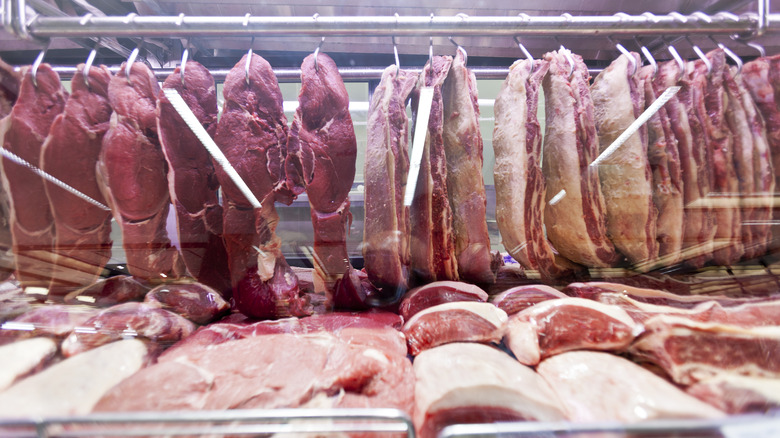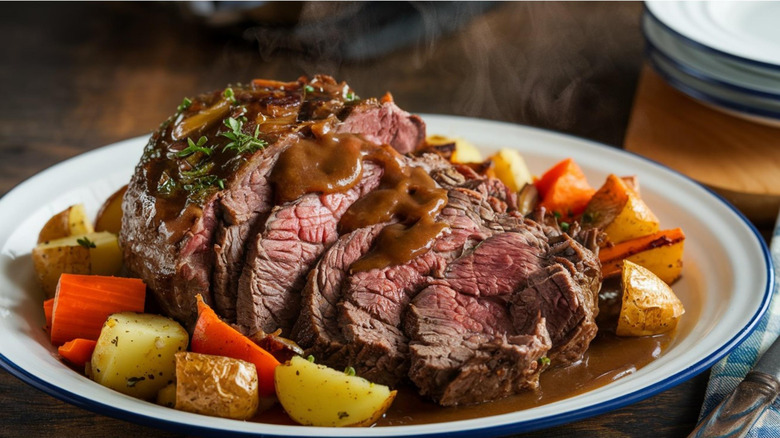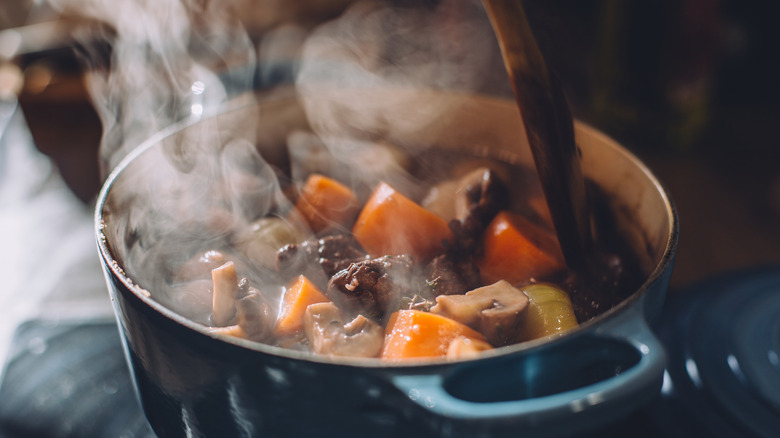Rump Roast Vs Bottom Round: The Difference Between Steaks
If you're shopping for affordable cuts of meat, two options you might encounter at the butcher are rump roast and bottom round (the latter of which is sometimes called "outside round"). These two cuts certainly share quite a few qualities, but that doesn't mean that they're identical, so it's worth knowing the nuances on how to best prepare and cook them.
A few key factors differentiate many steak cuts, these two included. One is the level of fat in the cut (this is often referred to as marbling): Fattier cuts are considered to be more flavorful.
The part of the cow that a cut comes from matters, too — if a cut of meat is from a muscle that the cow exercises a lot, it'll tend to be tougher; correspondingly, cuts from sections of the cow that don't get worked out as much will be more tender. This then has a major impact on how you'll prepare the beef — tender cuts can be seared and grilled, while those tougher cuts are usually better cooked for a longer period to soften them up.
What to know about rump roast
Rump roast comes from the top section of a cow's hindquarters (take note that while this top section is called "rump", it's part of a larger section sometimes called "round"). It's usually a more lean piece of beef, although it comes from a segment of the cow that gets a lot of movement, so it leans toward the tougher side of the spectrum.
That lack of tenderness means you probably won't want to just throw it on a piping hot grill like a piece of filet mignon. Instead, it's a better idea to employ a low and slow cooking method. This way, the collagen and connective tissue that make this kind of cut tough have time to break down. Rump roast makes for a good roast beef (and you can slice it up for sandwiches, too) — you'll sometimes find that it's sold in a rolled-up form that's bound in twine so that it's ready to roast. Other good options are pot roasts or beef stews that are prepared in a slow cooker or Instant Pot.
What to know about bottom round
Bottom round also comes from the cow's rear, but as the name implies, it comes from lower down, near the legs. It's also a lean cut without much marbling — it's leaner than rump roast, even though neither is particularly fatty. Like rump roast, it's not a very tender cut, so those slower cooking methods will usually be a better option. That means you can cook it with similar methods like roasting or braising on the stove or slow cooker — it'll work well with hearty, warming stew recipes like beef bourguignon.
It's worth noting that bottom round is sometimes sold in a few different forms, such as bottom round roast or bottom round steak. The steak cut may work with faster cooking methods like frying or searing, although it should be tenderized or marinated to prevent it from being too tough. If you're preparing it this way, you should also cut it thin and against the grain so that the meat fibers are shortened, as this makes it less chewy and tough.


